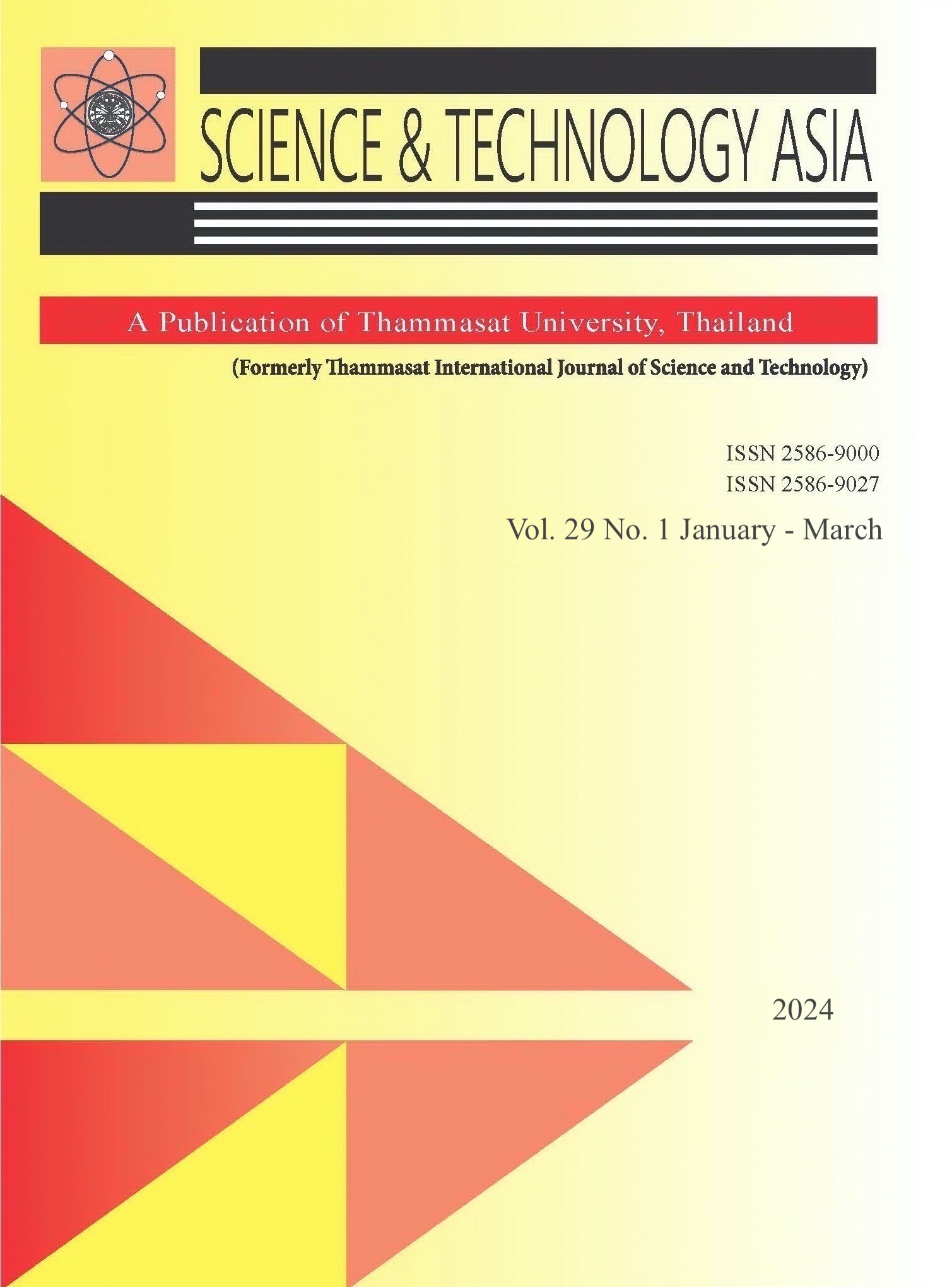Two-Sided Disassembly Line Balancing Design with a Soft Computing Technique
Main Article Content
Abstract
The aims of this research are twofold. First, a mathematical model is developed for the problem of two-sided balancing of disassembly lines for medium-sized products. Second, a metaheuristic algorithm is proposed for solving such a problem. The proposed mathematical model attempts to minimize the number of workstations, paired stations, modified index of work relatedness and workload balance between workstations. The proposed model falls in the domain of mixed-integer linear programming, which can be explained by the fact that it is a 𝑁𝑃-hard problem. We have presented the modified particle swarm optimization, which adds the concept of Pareto optimality to include the non-dominated solutions in the elite list. The proposed method is compared with two competing algorithms: the genetic algorithm and the combinatorial optimization with random algorithm on four benchmark instances. The result, which follows the concept of Pareto optimality, shows that our proposed method provides more non-dominated solutions than the competing algorithms. Moreover, the proposed algorithm exhibits better convergence and diversity than the competing algorithms. In practice, this research work could serve as a basis for designing a two-sided disassembly line for a medium-sized product.
Article Details

This work is licensed under a Creative Commons Attribution-NonCommercial-NoDerivatives 4.0 International License.
References
Özceylan E, Kalayci CB, Güngör A, Gupta SM. Disassembly line balancing problem: a review of the state of the art and future directions. International Journal of Production Research. 2019 Aug 29;57(15-16):4805-27.
Hezer S, Kara Y. A network-based shortest route model for parallel disassembly line balancing problem. International Journal of Production Research. 2015 Mar 19;53(6):1849-65.
Kalayci CB, Gupta SM. A particle swarm optimization algorithm with neighborhood-based mutation for sequence-dependent disassembly line balancing problem. The International Journal of Advanced Manufacturing Technology. 2013 Oct;69(1):197-209.
Kucukkoc I. Balancing of two-sided disassembly lines: Problem definition, MILP model and genetic algorithm approach. Computers & Operations Research. 2020 Dec 1;124:105064.
Kalayci CB, Hancilar A, Gungor A, Gupta SM. Multi-objective fuzzy disassembly line balancing using a hybrid discrete artificial bee colony algorithm. Journal of Manufacturing Systems. 2015 Oct 1;37:672-82.
McGovern SM, Gupta SM. A balancing method and genetic algorithm for disassembly line balancing. European journal of operational research. 2007 Jun 16;179(3):692-708.
Hezer S, Kara Y. A network-based shortest route model for parallel disassembly line balancing problem. International Journal of Production Research. 2015 Mar 19;53(6):1849-65.
Ding LP, Feng YX, Tan JR, Gao YC. A new multi-objective ant colony algorithm for solving the disassembly line balancing problem. The International Journal of Advanced Manufacturing Technology. 2010 May;48(5):761-71.
McGovern SM, Gupta SM. Disassembly Line: Balancing and Modeling. McGraw-Hill Education; 2011.
Pornsing C, Watanasungsuit A. Discrete particle swarm optimization for disassembly sequence planning. In2014 IEEE International Conference on Management of Innovation and Technology IEEE. 2014, pp. 480-5.
Kennedy J, Eberhart R. Particle swarm optimization. In Proceedings of ICNN'95-international conference on neural networks IEEE. 1995;4:1942-8. [12] Kongar E, Gupta SM. Genetic algorithm for disassembly process planning. In Environmentally Conscious Manufacturing II SPIE. 2002;4569:4-62.
Gupta SM, Erbis E, McGovern SM. Disassembly sequencing problem: a case study of a cell phone. In Environmentally conscious manufacturing IV SPIE. 2004: 5583:43-52.
Seidi M, Saghari S. The balancing of disassembly line of automobile engine using genetic algorithm (GA) in fuzzy environment. Industrial Engineering and Management Systems. 2016;15(4):364-73.
Gulivindala AK, Bahubalendruni MV, Chandrasekar R, Ahmed E, Abidi MH, Al-Ahmari A. Automated disassembly sequence prediction for industry 4.0 using enhanced genetic algorithm. Computers, Materials & Continua. 2021 Jan 1;69(2):2531-48.
Wattanapornprom W, Olanviwitchai P, Chutima P, Chongstitvatana P. Multi-objective combinatorial optimisation with coincidence algorithm. In2009 IEEE Congress on Evolutionary Computation IEEE. 2009, pp. 1675-82.
Y. Sun, G. G. Yen and Z. Yi, "IGD Indicator-Based Evolutionary Algorithm for Many-Objective Optimization Problems," in IEEE Transactions on Evolutionary Computation 2019; 23(2):173-87.
Zhang Y, Zeng B, Li Y, Li J. A mullti-or many-objective evolutionary algorithm with global loop update. arXiv preprint arXiv:1803.06282. 2018 Jan 25.


